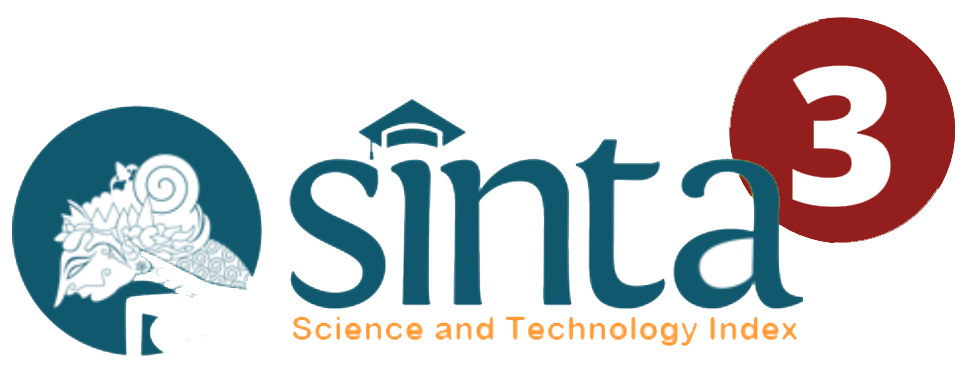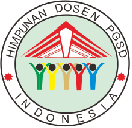INTERACTIVE MULTIMEDIA USE OF GAMES MODEL ON IPS SCHOOL STUDY LIST
DOI:
https://doi.org/10.22460/pej.v1i1.421Abstract
The development of information and communication technologies have a major impact in many areas of life, one of which is education. Learning use the media, is a strategy favored by students, particularly those related to technology. Because no denying that the interest of students to current technologies is huge. It can be seen from the children of school age, who loss of learning time because they are pre occupied with the world of technology, such as playing games, mobile phones and computers. Indonesian Internet Service Provider Association (APJII) conducted a survey of online game players active in Indonesia, the result is there are about 6 million online game players. This proves that Indonesian children have an interest in the game.  The change of curriculum in Indonesia from 2006 curriculum (Curriculum Education Unit) into a curriculum 2013, providing a wide range of implications for the learning process, one of which is the subject of Information and Communication Technology (ICT). In curriculum 2013, ICT subjects be erased, it’s means not stand alone but rather merged or combined with other subjects. In elementary school curriculum needs subjects that are combined with computer lessons (Guha &Leonard, 2002). Therefore, teachers must be able to create methods that can capitalize on technology such as computer media in the learning process.Keywords: Computer, Interactive multimedia games model, Social Studies, Elementary school , and Understanding of concepts.References
Darmawan, Deni. (2012). Teknologi Pembelajaran. Bandung: PT Remaja Rosdakarya.
Depdiknas. 2006. Peraturan Menteri Pendidikan Nasional RI No. 22 Tahun 2006 Tentang Standar Isi untuk Satuan Pendidikan Dasar dan Menengah. Jakarta: Depdiknas.
Guha, S. & Leonard, J. (2002). Motivation in elementary mathematics: How students and teachers benefit from computers. TechTrends, 46 (1), 40-43.
Ivers, K.S., & Barron, A.E. (2002). Multimedia Projects in Education: Designing, Producing, and Assessing. Connecticut: Libraries Unlimited.
Jackson, AT.Dkk. (2013).An evaluation of interactive tabletops in elementary mathematics education.Education Tech Research Dev, 61, 311-332.
Kariadinata, Rahayu. (2012). Aplikasi Multimedia Interaktif dalam Pembelajaran IPS Sebagai Upaya Meningkatkan Kemampuan Berpikir Matematik Tingkat Tinggi Siswa SMA.(Disertasi).Sekoalh Pasca Sarjana Universitas Pendidikan Indonesia, Bandung.
Koesnandar, Ade. (2006). Pengembangan software pembelajaran multimedia interaktif.Jurnal Teknodik, 18 (X), 75-83.
Kilpatrick, Jeremy. Dkk. (2001).Adding It Up: Helping Children Learn Mathematics. Washington, DC: National Academy Press.
Ladel, Silke. (2006). An academic experiment on the use of computers in elementary school mathematics classrooms. ZDM, 38 (6), 464-471.
Milovanoviu, M. dkk.(2013). Application of interactive multimedia tools in teaching mathematics – examples of lessons from geometry.The Turkish Online Journal of Educational Technology, 12 (1), 12-31
Moreno, Roxana. (2002). Who Learns Best with Multiple Representations? Cognitive Theory Implications for Individual Differences in Multimedia Learning. Amerika: ERIC
NCTM.(1989). Curriculum and Evaluation Standards for School Mathematics.Restori, Va: NCTM.
Nusir, dkk. (2012). Studying the impact of using multimedia interactive programs at children ability to learn basic math skills. ActaDidacticaNapocensia, 5 (2), 17-32. ISSN 2065-1430.
Olive, John. (2000). Computer tools for interactive mathematical activity in the elementary school.International Journal of Computers for Mathematical Learning, 5 , 241-262. Netherland: Kluwer Academic Publisher.
Prayitno, S., Suwarsono, S., &Siswono, T.Y. (2013).Identifikasi indicator kemampuan komunikasi matematissiswa dalam menyelesaikan soal IPS berjenjang pada tiap-tiap jenjangnya.KNPMV, Himpunan IPS Indonesia. 384-389.
Rusman, Kurniawan, D., &Riyana, C. (2011).Pembelajaran berbasi Teknologi Informasi dan Komunikasi. Jakarta: PT Raja grafindo Persada.
Santrock, John W. (2012). Life Span Development. Jakarta: PT Erlangga.
Seo, You-Jin.& Bryant, D. (2010).Multimedia CAI program for students with mathematics difficulties.Remedial and Special Education, 33 (4), 217-225. DOI: 10.1177/0741932510383322.
Umar, Wahid. (2012). membangunkemampuankomunikasi matematis dalam pembelajaran IPS.Jurnal Ilmiah Program Studi IPS STKIP Siliwangi Bandung, 1 (1), 1-9.
Warsihna, Jaka. (2005). “Dilema†pemanfaatan teknologi komunikasi dan informasi (ICT) untuk meningkatkan mutu pendidikan.Jurnal Teknodik, 16 (10), 60-76.
Van De Walle, Jhon A. (2008). IPS Sekolah Dasar dan Menengah (Dr. Suyono, M.Si.Terjemahan).Jakarta:Erla










